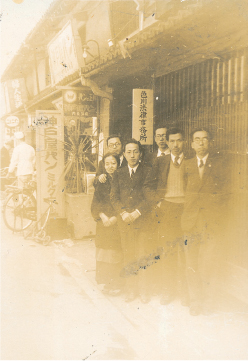
In 1927(S2)
Kohtaro Irokawa joins the Osaka Bar Association.
Mr. Irokawa begins handling cases across western Japan as an external counsel for the Japan Farmers’ Union.
From 1940 to 1945, Mr. Irokawa is drafted into the military and serves as a legal officer.
In 1947(S22)
The firm moves to a building owned by the then Konoike Construction Co., Ltd. at 2 Chome, Kitahama, Higashi-ku, Osaka-shi.
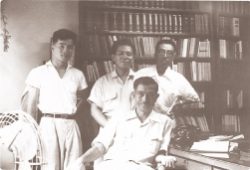
In 1961(S36)
Mr. Irokawa becomes the president of the Osaka Bar Association.
The firm handles general civil and commercial cases as well as criminal cases, such as cases involving obstruction of business and the Foreign Exchange and Foreign Trade Control Act.
In 1962(S37)
During construction of the new Dai-sho-kin Building, the firm is temporarily transferred to a 2nd story private residence adjacent to the eastern side of Kagairo. Upon completion of the Dai-sho-kin Building, the firm moves to the 5th floor.
In 1966(S41)
Mr. Irokawa is appointed as a Justice of the Supreme Court.
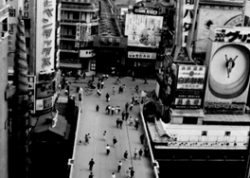
In 1973(S48)
Mr. Irokawa leaves the Supreme Court and returns to the firm.
Major Cases Handled during this Period
- Collective lawsuits filed by consumers of thalidomide at eight district courts nationwide, including the courts of Tokyo, Nagoya, Osaka, and Fukuoka, between 1963 and 1965.
- Case under the Foreign Exchange and Foreign Trade Control Act
- Damage action for defamation via public news broadcasting
- Case in which abuse of discretionary power concerning disciplinary dismissal of government officials is contested (Result: No abuse found.)
- Case in which abuse of discretionary power concerning disciplinary dismissal for customs officers is contested (Result: No abuse found)
- Malpractice cases against doctors and hospitals in Osaka prefecture
In 1979(S54)
Office space limitations at the Dai-sho-kin Building force the firm to relocate to the 3rd floor of the former Nippon Life Imabashi Building at 3 Chome, Kitahama.
In 1983(S58)
Remodeling of the former Nippon Life Imabashi Building leads the firm to a move northward to the 8th floor of the Keihan Yodoyabashi Building. Mr. Hayashi is appointed as a Justice of the Supreme Court in 1986 while the office is in the aforementioned building; Hayashi passes away in the following year (1987).
In 1993(H5)
Kohtaro Irokawa dies.
Major Cases Handled during this Period
- Collective lawsuits filed by consumers of clioquinol at 33 district courts nationwide, from Sapporo in the north to Kumamoto in the south, and in the Tokyo District Court after 1971
- Collective lawsuits filed by patients with quadriceps contracture
- Collective lawsuits filled by consumers of chloroquine Collective lawsuits filled by patients with AIDS
- Case for contesting whether or not the time between entering a gate and starting time and the time between ending time and exiting a gate constitute working hours
- Case for contesting whether or not a company conducting radio and television broadcasting is an “employer” under Article 7 of the Labor Union Act, with regard to relations with employees of a subcontracting company engaging in television program production
- Case in which agreements among omnibus operators that restrict applications for licenses for certain bus routes are found to constitute private monopolization and thus declared invalid
- Nishiyodogawa air pollution case
- Hiranogawa flood damages case for contesting defects regarding establishment and management of sewage systems
- Case for claim of injunction regarding commercial advertisement broadcasting, contesting the illegality of commercial advertisement broadcasting within cars of city subway lines
- Taxpayer suit regarding claim for violation of the Constitution (Jizo Statues Case in Osaka)
- Case of claim for rescinding decision to adopt business plans, such as Osaka city planning projects, etc. (contesting whether or not a decision to adopt business plans concerning Category II urban redevelopment projects under the Urban Renewal Act constitutes an administrative disposition as the target of a protest suit)
- Case of claim for injunction regarding operation of the Takahama Nuclear Power Plant, KEPCO (contesting whether or not there exists a specific risk that could lead to breakage of steam generator heat transfer tubes in the pressurized water reactor of the nuclear power plant, and whether or not there exists a specific risk of meltdown in the case of breakage of heat transfer tubes)
- Malpractice cases against doctors and hospitals in Osaka prefecture.
In 1994(H6)
Lawyers who affirm Irokawa’s philosophy (embodied in Irokawa’s speech regarding qualifications required for lawyers) assume his position.
Major Cases Handled during this Period
- Case related to indemnification accompanying compulsory purchase of lands
- Case related to retirement age for female employees
- Case for contesting whether or not performance of necessary tests for application for regulatory approval under the Pharmaceutical Affairs Act concerning generic drugs constitutes “implementation of a patented invention for experimental or research purposes” under the Patent Act
- Case for contesting whether or not refusal of shareholder’s offer to exercise voting rights by proxy at a general meeting of shareholders in which a lawyer serves as a proxy violates the provisions of the old Commercial Code, Article 239 paragraph 2 (Restriction of Proxy Qualification)
- Case in which shareholder derivative suits are found to be dismissed because no damage was found to have been caused to the surviving company, even though the merger ratio was found to have been unreasonable and unfair
- With regard to a claim for damages in which promotion and a wage differential arose out of gender discrimination, a case in which the corresponding claim is found not to have violated public policy and not to be illegal because the promotion and the wage differential resulted from hiring classification
- Case in which dismissal is found to be carried out due to no violation of the duty of care of a prudent manager or violation of the duty of loyalty (with regard to a shareholder derivative suit in which the bank director’s violation of the duty of care of a prudent manager and violation of the duty of loyalty were claimed to exist concerning bank loans made to a resort development company)
- Case of claim for damages regarding promotion and a wage differential resulting from gender discrimination
- Case of claim for damages in which a casualty accident (fatalities and injuries among users of a pedestrian bridge) that occurred due to congestion following a summer fireworks festival was claimed to have resulted from negligence on the parts of prefectural and city governments, and of a security company
- Case contesting whether or not special provisions to the effect that a lessee would assume obligation for restoration to the original state of wear-and-tear arising from normal use of a leased building have been validly established
- Case regarding injunction on bond issuance for road expansion construction
- Case in which the Act on Stabilization of Employment of Elderly Persons is found not to have effect under private law and despite the fact that the employment system adopted by the company corresponds to disadvantageous modification, a rational basis exists sufficient for approval of disadvantageous modification (with regard to a claim for damages in which mandatory retirement at the full age of 60 years without undertaking statutory measures under the Act on Stabilization of Employment of Elderly Persons constituted illegality)
- Collective lawsuits filed by patients with hepatitis C relating to hepatitis C virus infection by way of blood derived products
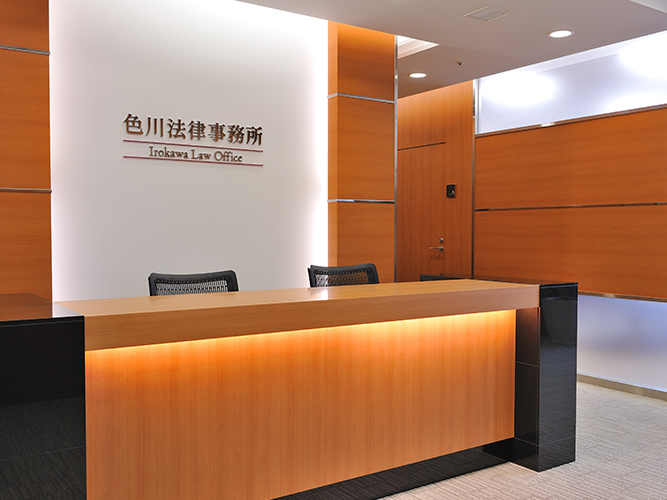
In 2009(H21)
The firm moves to its present location on the 12th floor of Yodoyabashi Square.
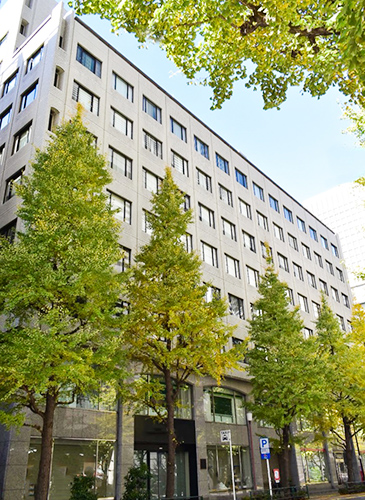
In 2015(H21)
The firm established Irokawa Legal Profesional Corporation to open a Tokyo office.
In 2020(R2)
Former Irokawa Law Office (Osaka) was merged with Irokawa Legal Professional Corporation and integrated as a single legal entity.

 Japanese
Japanese